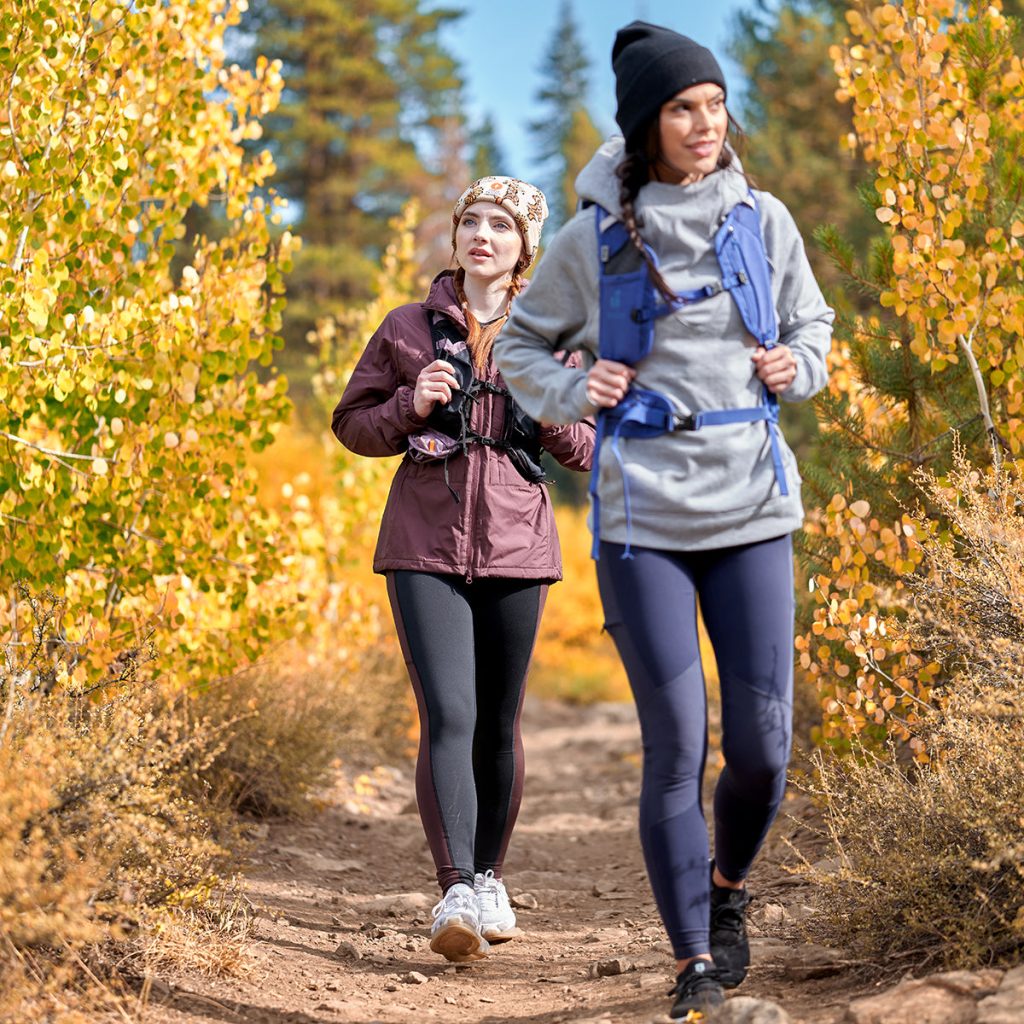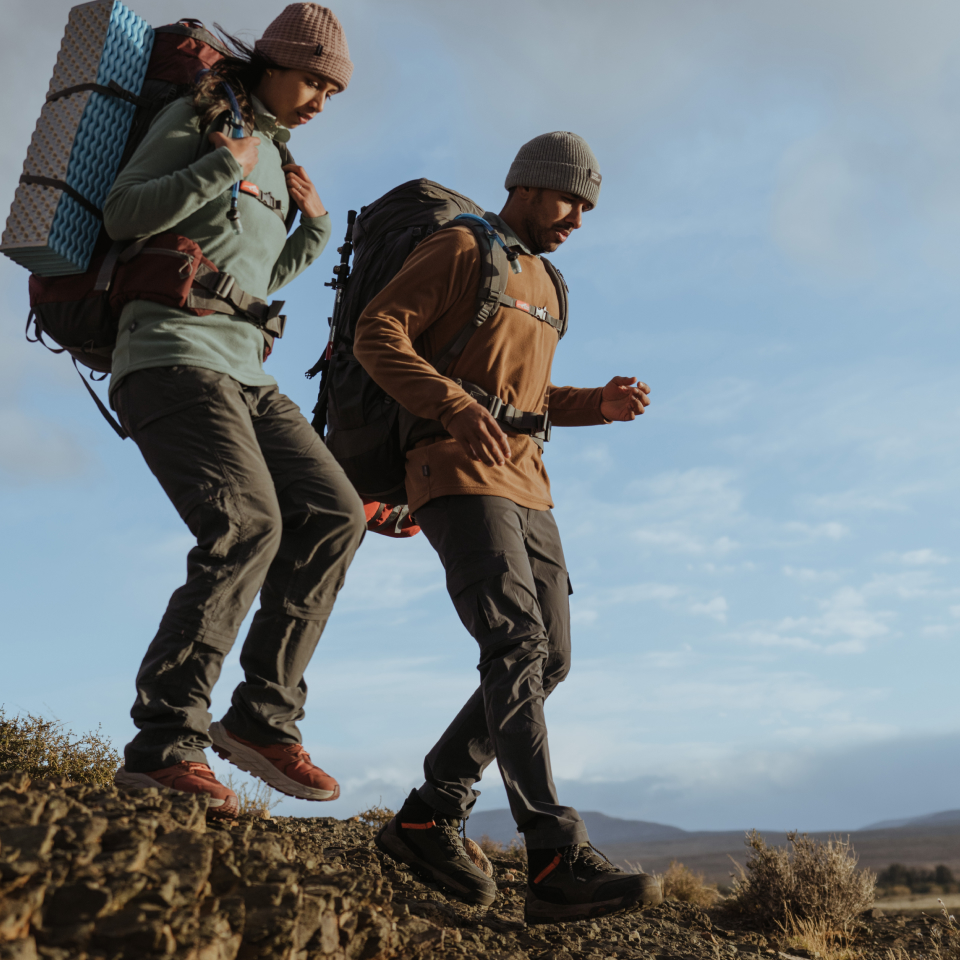Selecting the right hiking clothes is vital for a comfortable, safe, and enjoyable outdoor adventure. The correct attire can protect you from the elements, regulate your body temperature, and enhance your overall hiking experience. This comprehensive guide covers essential clothing items, the importance of layering, appropriate footwear, accessories, seasonal considerations, and maintenance tips.
Essential Clothing Items
Tops and Bottoms
When it comes to selecting tops for hiking, prioritize materials that wick moisture away from your skin. Synthetic fabrics like polyester and nylon, and natural materials like merino wool, are excellent choices. These fabrics keep you dry by pulling sweat away from your body. Avoid cotton as it retains moisture, making you feel cold and uncomfortable. Long-sleeved shirts offer protection from sun, bugs, and rough vegetation, while short-sleeved options can be cooler and more comfortable in warm weather. For bottoms, lightweight, quick-drying, and durable pants or shorts are ideal. Convertible pants, which can be turned into shorts, provide versatility for changing weather conditions.
Outer Layers
An outer layer is essential for protection against wind, rain, and other elements. A waterproof and breathable jacket is a must-have for all-season hiking. Look for jackets with adjustable hoods, sealed seams, and ventilation zippers to enhance comfort and weather resistance. In colder climates, layering with a softshell or insulated jacket provides additional warmth. This way, you can adapt to varying weather conditions and maintain your comfort throughout your hike.

Importance of Layering
Base Layers
The base layer serves as the foundation of your hiking outfit and is crucial for moisture management. Lightweight merino wool or synthetic base layers are excellent for regulating your body temperature and wicking sweat away. These materials are also quick-drying and help reduce the risk of chafing. Depending on the weather and intensity of your hike, choose either a lightweight base layer for warmer conditions or a heavier one for colder climates.
Mid Layers
The mid layer provides insulation and helps retain body heat. Fleece jackets, down vests, and synthetic insulated jackets are popular mid-layer options. These materials trap warm air close to your body while allowing excess moisture to escape. You can adjust the thickness of your mid layer based on the temperature and your activity level. In very cold conditions, using multiple mid layers can offer enhanced insulation and flexibility, allowing you to stay comfortable throughout the hike.
Appropriate Footwear
Hiking Boots
Choosing the right hiking boots is crucial for comfort and safety on the trail. Look for boots that provide adequate ankle support, cushioning, and a sturdy sole with good traction. Waterproof boots are beneficial for wet or muddy conditions, while breathable boots help keep your feet dry in warmer weather. Ensure your boots fit well, with enough room for your toes and no pressure points that could cause discomfort. Properly fitted and broken-in boots help prevent blisters and enhance stability on uneven terrain.
Socks
Socks play a vital role in your hiking comfort. Choose moisture-wicking socks made from merino wool or synthetic blends to keep your feet dry and prevent blisters. Avoid cotton socks, as they retain moisture and increase the risk of blisters when wet. Depending on the weather, you may choose different sock thicknesses for warmth or cooling. Liner socks can also be worn under regular hiking socks for extra protection against blisters. Proper sock selection enhances overall foot health and comfort on the trail.

Accessories
Hats and Gloves
Accessories like hats and gloves are crucial for added comfort and protection. A wide-brimmed hat or cap shields your face and neck from the sun, while a beanie or balaclava provides warmth in cold conditions. Gloves protect your hands from cold, wind, and rough terrain. In warmer climates, lightweight and sun-protective gloves are useful for preventing sunburn. Choose accessories based on the climate and your specific needs to enhance your overall hiking experience.
Backpacks
A good quality hiking backpack is essential for carrying your gear, water, and snacks. Look for backpacks with adjustable straps, padded back panels, and multiple compartments for organization. A backpack with a hydration system compartment makes it easier to stay hydrated on the go. Depending on the length of your hike, choose a backpack with the appropriate capacity, ensuring you can carry all necessary supplies comfortably. A well-equipped backpack enhances your hiking efficiency and preparedness, making it an integral part of your outfit.
Seasonal Considerations
Warm Weather Hiking
In warm weather, choosing the right clothing is crucial to staying cool, comfortable, and protected. Lightweight, breathable fabrics like polyester and nylon are excellent choices because they wick moisture away from your body, keeping you dry and preventing you from feeling sticky and uncomfortable. Long-sleeved shirts and pants made from breathable materials can offer significant advantages. They provide much-needed sun protection, shielding your skin from harmful UV rays, while still allowing air to circulate and keeping you relatively cool. A shirt with ventilation features like mesh panels can further enhance breathability.
Accessories also play a vital role in warm-weather hiking. A sun hat with a wide brim protects your face, neck, and ears from the sun. Pairing it with sunglasses that offer UV protection helps shield your eyes from harsh sunlight and glare. Carrying and regularly applying sunscreen is essential to avoid sunburn, especially on exposed areas like your face, neck, and hands.
Hydration is another critical factor. Dehydration can happen quickly in hot conditions, so it’s important to drink water regularly. A hydration backpack, equipped with a built-in water reservoir and drinking tube, allows for easy access to water without having to stop and reach for a bottle. Alternatively, carrying several water bottles in easy-to-reach spots in your backpack can be just as effective. Electrolyte-replacement drinks or tablets can also help maintain your body’s hydration levels, replacing the salts and minerals lost through sweat. Overall, proper warm-weather gear not only ensures your comfort but is essential for your safety during summer hikes, helping you fully enjoy the trail and the experience.
Cold Weather Hiking
Cold weather hiking demands more layers to stay warm and comfortable. Start with a moisture-wicking base layer, add an insulating mid layer, and top it off with a waterproof and windproof outer layer. Insulated hiking boots, warm socks, gloves, and a hat are essential for retaining body heat and protecting against frostbite. Consider packing hand and foot warmers for extreme conditions. Staying dry is crucial to avoid hypothermia, so choose clothing that manages moisture effectively. Planning and dressing appropriately for cold weather hikes ensure your safety and enjoyment in winter landscapes.

Maintenance Tips
Cleaning Your Gear
Proper care and maintenance of your hiking clothes extend their lifespan and performance. Follow the manufacturer’s instructions for cleaning and drying. Use gentle detergents and avoid fabric softeners, which can damage technical fabrics and reduce their moisture-wicking properties. Regularly inspect your gear for wear and tear, repairing or replacing items as needed. Proper maintenance preserves the functionality and durability of your hiking clothes, ensuring they perform well on future hikes.
Storage Tips
Storing your hiking clothes properly prevents damage and keeps them ready for your next adventure. Clean and dry your gear thoroughly before storage to prevent mildew and odors. Store clothing in a cool, dry place, and keep footwear in a breathable bag or box. Avoid compressing down jackets and sleeping bags for extended periods to maintain their loft and insulation capabilities. Regularly air out your gear to prevent musty smells and keep everything fresh. Proper storage practices ensure your hiking clothes remain in good condition and ready for your next trail journey.
Choosing the right hiking clothes is essential for a comfortable, safe, and enjoyable outdoor experience. By understanding the importance of layering, selecting appropriate footwear, and using essential accessories, you can prepare for any hiking conditions. Seasonal considerations and proper maintenance further enhance the longevity and performance of your hiking gear. With the right outfit, you can fully embrace the beauty of nature and the thrill of hiking, whether you’re a seasoned hiker or a beginner exploring new trails. Happy hiking!


